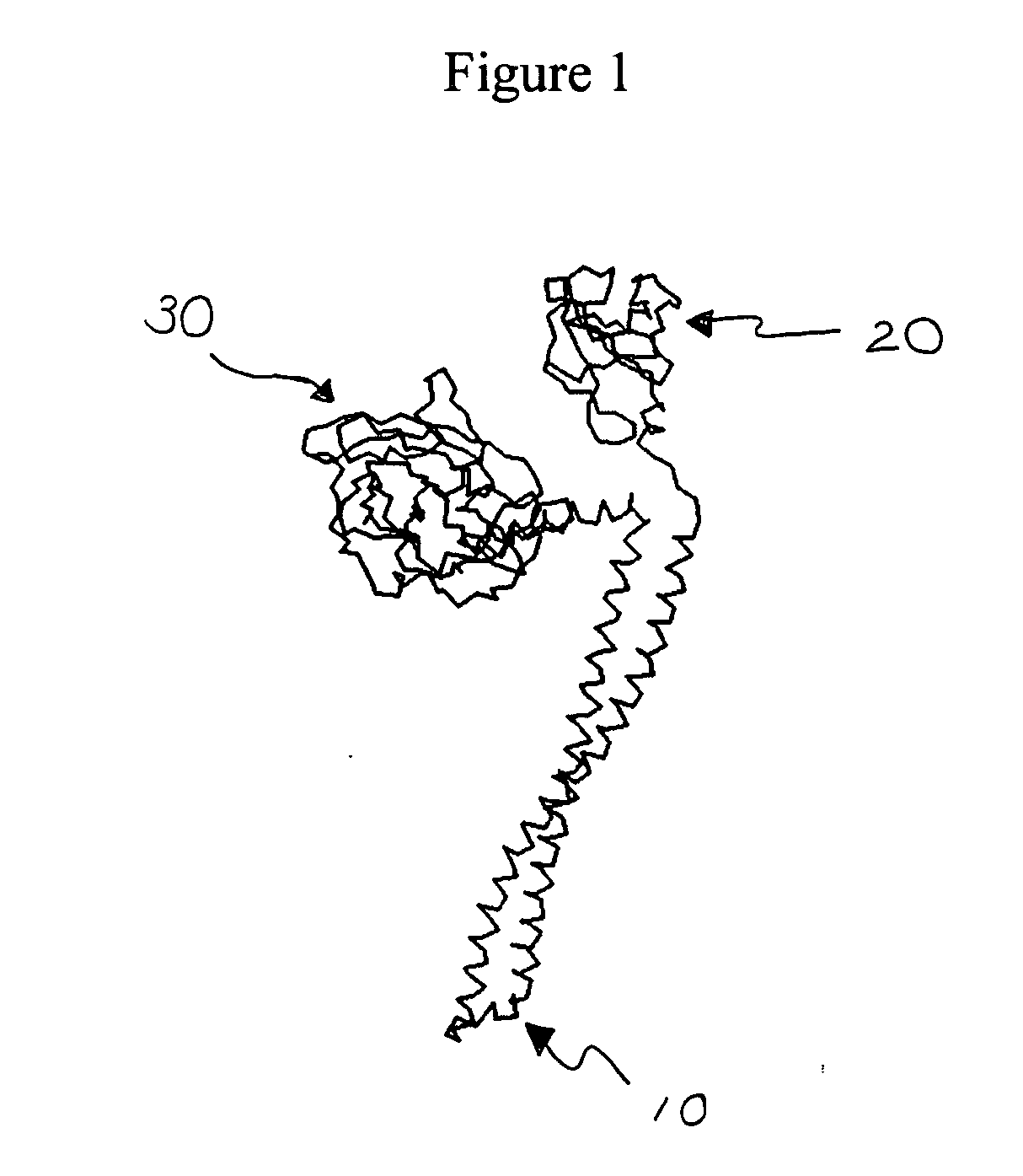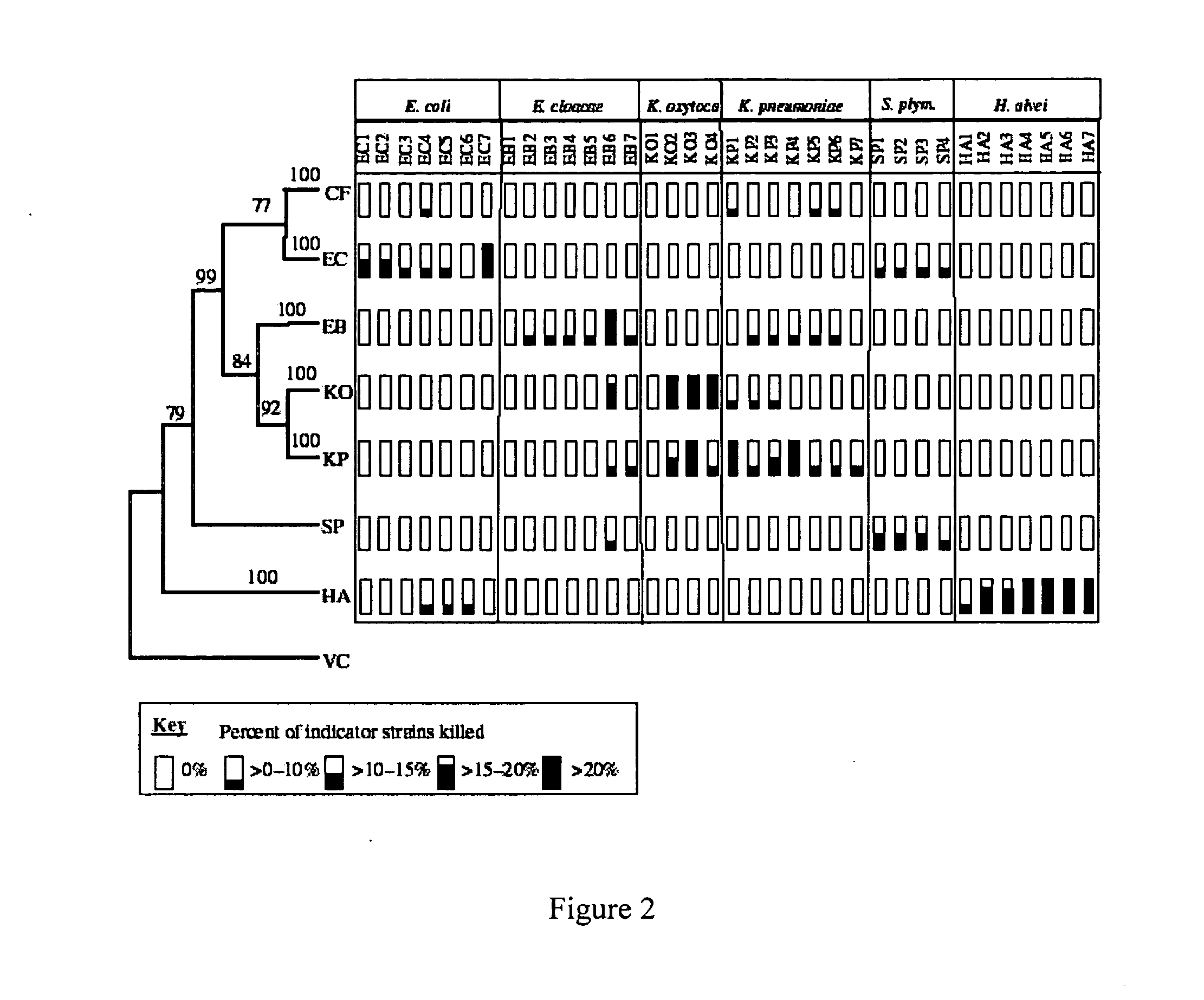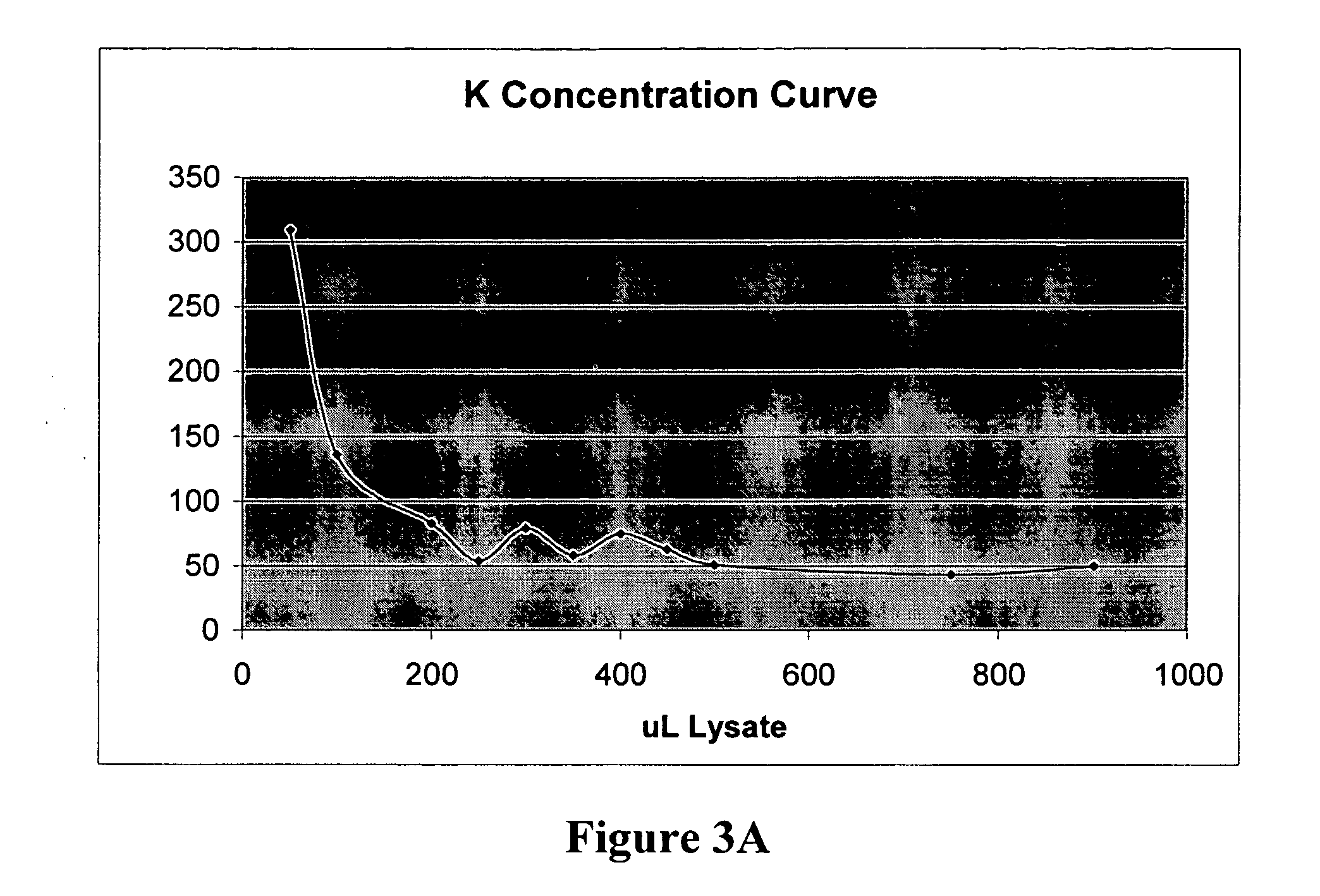Engineered bacteriocins and bacteriocin combinations and methods for treating bacterial based infections
a technology of bacteriocin and bacteriocin combination, which is applied in the field of bacterial based infection treatment, can solve the problems of increasing the resistance of bacterial pathogens to antibiotics, increasing the cost of multi-component therapies, and increasing the cost of antibiotics, so as to reduce the resistance rate of bacteriocin or bacteriocin combination in the patient, and achieve the effect of reducing the resistance rate of bacteriocin or bacteriocin combination
- Summary
- Abstract
- Description
- Claims
- Application Information
AI Technical Summary
Benefits of technology
Problems solved by technology
Method used
Image
Examples
example 1
Partial Purification of Colicin Proteins and Their Activity Against an Indicator Strain
[0042] One ml of a fresh overnight growth of each wild-type colicin producer cell line is transferred into 50 ml fresh LB media in 250 mL Erlenmeyer flasks. The cultures were grown at 37° C. with agitation for approximately 90 minutes. When the A600 reached OD of >0.2, 500 μl of a 50 μg / ml solution of Mitomycin C are added (final concentration: 0.05 μg / ml) to induce colicin production, and growth is continued for three to six hours. The cells are lysed by adding 3 ml of chloroform and vortexing. After centrifugation at 10,000 g for 10 minutes, the supernatant containing the colicin molecules is transferred to a clean tube and partially purified and concentrated using Centricon Plus-20 spin columns (P1-30, 30,000 NMWL) according to manufacturer's instructions, generally resulting in a 100-500-fold concentration of the colicin molecules. The resulting concentrates can be used directly, or stored at...
example 2
Colicin Activity Against Uropathogenic E. coli
[0043] Using the methods described in Example 1, the sensitivity of strains of uropathogenic E. coli to naturally occurring colicins was assayed. The uropathogenic E. coli are a sample of clinical isolates obtained from women presenting with cystitis and related urinary tract infections. Table 1 shows the sensitivity of uropathogenic E. coli to naturally occurring colicins. This study established that colicins are effective antimicrobials against uropathenogenic E. coli, underscoring the potential of colicins in the treatment and prevention of urinary tract infections.
TABLE 1UTI StrainColicin Sensitivity36E1, E3, E7, E9, A, D, K, Ia, Ib, M, N, C1.9, C2.1145A, D, K177E1, A, D, K, Ib457E1, E3, E7, E9, A, D, K, Ib, C1.9, C2.11458E1, E3, E7, E9, A, D, K, Ia, Ib, N, C1.9, C2.11473E1, A, D, K
example 3
Bacteriocin Activity Against Enteric Bacteria
[0044] A phylogenetic-based screen was performed to reveal the specificity of naturally occurring bacteriocins. A well-characterized collection of over 500 strains of enteric bacteria isolated from wild mammals in Australia was assayed for bacteriocin production and sensitivity. FIG. 2 summarizes these data. The results most relevant to this study include: (i) bacteriocins are found at high levels in natural populations of enteric bacteria, (ii) these naturally occurring toxins are most effective at killing members of the same species, (iii) certain bacteriocins show high levels of activity against other species of bacteria, and (iv) there are numerous bacteriocins with strain- and species-specific activity. The work is detailed in Wertz et al., 2003.
PUM
| Property | Measurement | Unit |
|---|---|---|
| concentration | aaaaa | aaaaa |
| concentration | aaaaa | aaaaa |
| resistance | aaaaa | aaaaa |
Abstract
Description
Claims
Application Information
 Login to View More
Login to View More - R&D
- Intellectual Property
- Life Sciences
- Materials
- Tech Scout
- Unparalleled Data Quality
- Higher Quality Content
- 60% Fewer Hallucinations
Browse by: Latest US Patents, China's latest patents, Technical Efficacy Thesaurus, Application Domain, Technology Topic, Popular Technical Reports.
© 2025 PatSnap. All rights reserved.Legal|Privacy policy|Modern Slavery Act Transparency Statement|Sitemap|About US| Contact US: help@patsnap.com



